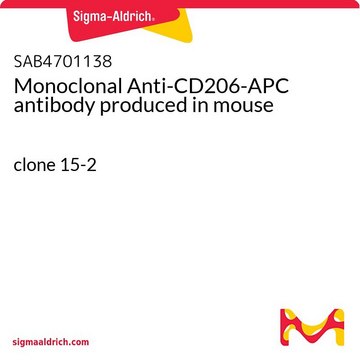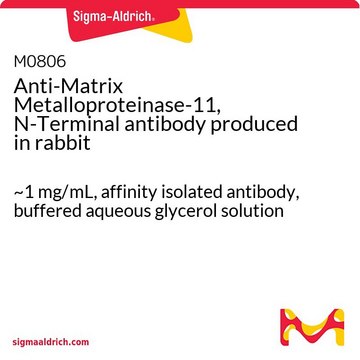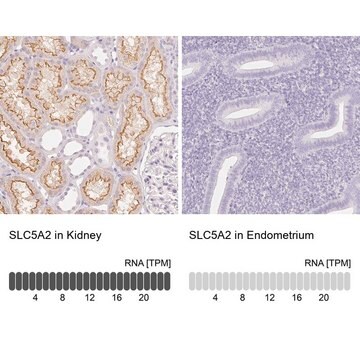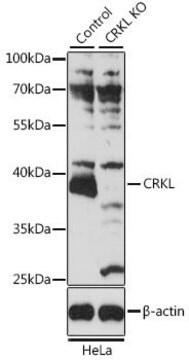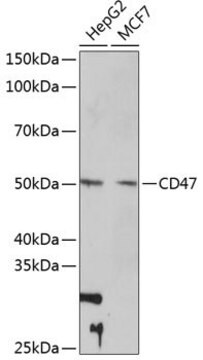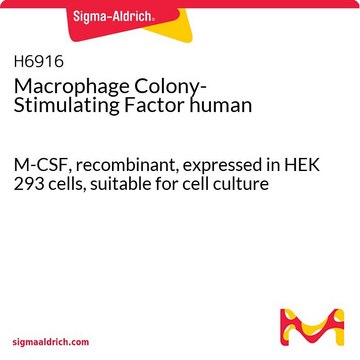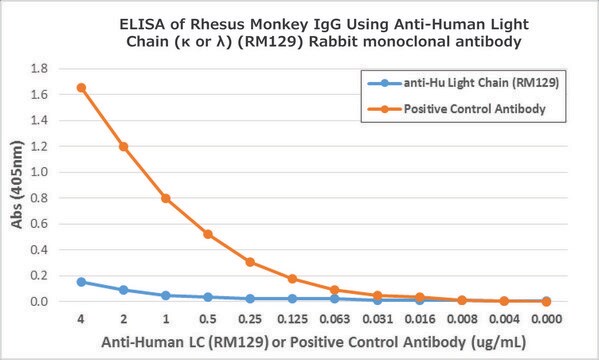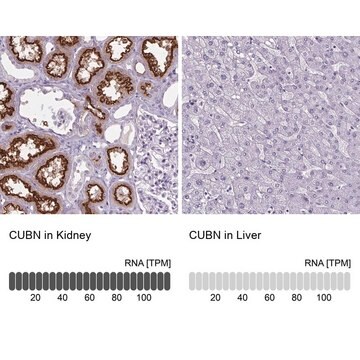SAB4700622
Monoclonal Anti-Ly6g-FITC antibody produced in rat
clone RB6-8C5, purified immunoglobulin, buffered aqueous solution
Synonym(s):
Anti-Gr-1, Anti-Gr1, Anti-Ly-6G
Sign Into View Organizational & Contract Pricing
All Photos(1)
About This Item
UNSPSC Code:
12352203
NACRES:
NA.41
Recommended Products
biological source
rat
Quality Level
conjugate
FITC conjugate
antibody form
purified immunoglobulin
antibody product type
primary antibodies
clone
RB6-8C5, monoclonal
form
buffered aqueous solution
species reactivity
mouse
concentration
1 mg/mL
technique(s)
flow cytometry: suitable
isotype
IgG2b
NCBI accession no.
UniProt accession no.
shipped in
wet ice
storage temp.
2-8°C
target post-translational modification
unmodified
Gene Information
mouse ... Ly6g(546644)
Related Categories
General description
Lymphocyte antigen 6 complex, locus G (Ly6G) is a 25kDa glycosylphosphatidylinositol (GPI)–anchored protein. It is encoded by the gene mapped to mouse chromosome 15. The encoded protein belongs to the Ly6/urokinase plasminogen activator receptor (uPAR) family. Ly6G is characterized with a “3 finger fold” motif stabilized by 4-5 disulfide bonds. Ly6G is expressed only in mice.
The rat monoclonal antibody RB6-8C5 detects Ly6G component of Gr-1 antigen, a commonly used surface marker of neutrophils.
Immunogen
Murine granulocytes
Application
The reagent is designed for Flow Cytometry analysis. Suggested working dilution is 1 μg/mL of sample. Indicated dilution is recommended starting point for use of this product. Working concentrations should be determined by the investigator.
Biochem/physiol Actions
The protein folds of lymphocyte antigen 6 complex, locus G (Ly6G) help to form a docking site for other molecules. Ly6G functions as a marker for neutrophils. The encoded protein might be implicated in the modulation of leukocyte migration.
Features and Benefits
Evaluate our antibodies with complete peace of mind. If the antibody does not perform in your application, we will issue a full credit or replacement antibody. Learn more.
Physical form
Solution in phosphate buffered saline, pH 7.4, with 15 mM sodium azide.
Disclaimer
Unless otherwise stated in our catalog or other company documentation accompanying the product(s), our products are intended for research use only and are not to be used for any other purpose, which includes but is not limited to, unauthorized commercial uses, in vitro diagnostic uses, ex vivo or in vivo therapeutic uses or any type of consumption or application to humans or animals.
Not finding the right product?
Try our Product Selector Tool.
Storage Class Code
10 - Combustible liquids
Flash Point(F)
Not applicable
Flash Point(C)
Not applicable
Choose from one of the most recent versions:
Already Own This Product?
Find documentation for the products that you have recently purchased in the Document Library.
Ly6G ligation blocks recruitment of neutrophils via a β2-integrin?dependent mechanism
Wang JX
Blood, 120, 1489-1498 (2012)
Antibodies against neutrophil LY6G do not inhibit leukocyte recruitment in mice in vivo
Yipp BG and Kubes P
Blood, 121, 241-242 (2013)
Ly6 family proteins in neutrophil biology
Lee PY
Journal of Leukocyte Biology, 94, 585-594 (2013)
Yangyang Zhang et al.
Diabetes, 69(7), 1549-1561 (2020-04-30)
Diabetic keratopathy, a sight-threatening corneal disease, comprises several symptomatic conditions including delayed epithelial wound healing, recurrent erosions, and sensory nerve (SN) neuropathy. We investigated the role of neuropeptides in mediating corneal wound healing, including epithelial wound closure and SN regeneration.
Yong Woo Jung et al.
European journal of immunology, 39(8), 2281-2292 (2009-07-14)
Th2 lymphocytes deliver essential signals for induction of asthmatic airway inflammation. We previously found that airway antigen challenge induces recruitment of Gr-1(+) neutrophils prior to the recruitment of Th2 cells. We examined, therefore, whether Gr-1(+) cells contribute to the development
Our team of scientists has experience in all areas of research including Life Science, Material Science, Chemical Synthesis, Chromatography, Analytical and many others.
Contact Technical Service